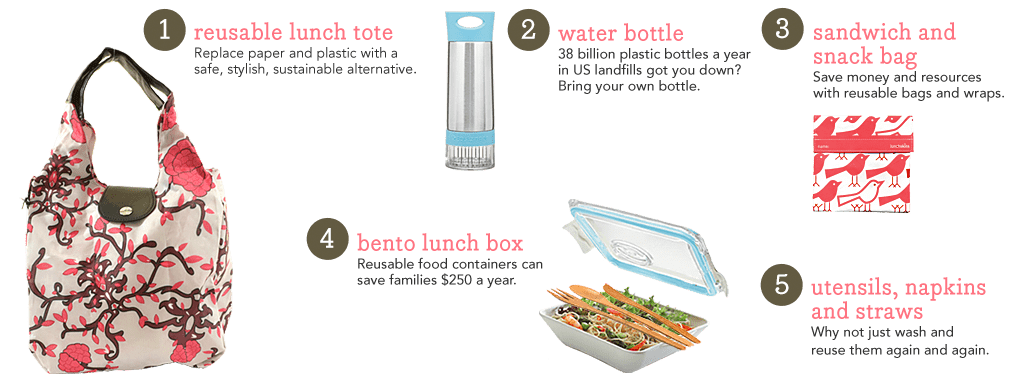Many of us are learning to be green at home.
It’s a natural extension to take similar measures at work, both to save energy and to create a healthier work environment.
Green improvements at the workplace not only positively benefit air quality and our planet, but also have a huge impact on employee productivity.
Being resource-efficient and conscious of improving the health and well-being of workers inevitably reduces the costs of running a business and can even increase the bottom line. Furthermore, a green corporate culture attracts younger talent more inclined to work for companies that are sustainable and environmentally responsible.
Greening your workforce makes great business sense—make the executive decision for green improvements at work today.
The Green Scene
There are limitless possibilities to greening your workspace. Here are some simple, basic improvements to consider.
Maximize Computer Efficiency
For many people, a computer is a central tool at work, but it also unnecessarily depletes $1 billion worth of electricity a year. This is why optimizing the energy settings for computers and other devices can be more than a modest energy saver.
- Invest in an energy-saving computer, monitor, and printer– it’s easy to find these computers thanks to the Energy Star label.
- Switch to energy-saving settings– monitor/display sleep: turn off after 15 minutes or less; turn off hard drives/hard disk sleep: 15 minutes or less; and system standby/sleep: after 30 minutes or less.
- Setting the computer to sleep mode when you are away for short periods of time makes good sense. Screensavers use energy rather than save it. Relying on energy management features to power down to the lowest energy use, or sleep mode can save 60-70% of the power.
- Shut down at the end of the workday.
- Don’t rush into buying a new computer. Many facts need to be considered before making the decision on when to upgrade versus replacing your entire system altogether.
- Consider switching to a laptop, which uses less energy than desktop computers.
- If all arrows point toward getting a new computer, the old one can always be recycled.
Think Before You Print
The average American office worker goes through 10,000 sheets of copy paper a year, which stacks up to 4 feet! It is rather ironic that in the digital age, we are still consuming large quantities of paper. The greenest paper is no paper at all so keep things digital and electronically.
- The more you do online, the less you need paper. Send e-mails instead of paper letters. Review documents onscreen rather than printing them out. PDFs and e-mails were meant for the screen; keep them there.
- Keep files on computers instead of in file cabinets. This also makes it easier to make offsite backup copies or take them with you when you move to a new office.
- If you have a double-sided printer or copier, set the default to print on both sides. Avoid color printing and print in draft mode whenever feasible.
- Buy only recycled. The higher the recycled content, the better. Virtually every paper company and office supply store chain now sell recycled options. Look for post-consumer products and options that display the green recycled emblem.
- Use remanufactured printer cartridges. One-third of businesses nationwide do this. Many printer companies and manufacturers provide instructions on how to recycle your old cartridges. They also offer free packaging and postage if you wish to recycle your old cartridge, which is then refilled and used again.
- Read it online. Instead of subscribing to work-related journals, magazines and other printed materials, find out if there are ways to access the information you need online or electronically. Many publications are available online and offer equally comprehensive and more up-to-date information.
- Recycle what you use and put that blue bin into full use. Paper makes up one-third of all the waste—so it makes sense to recycle. Recycling one ton of office paper saves almost six tons of CO2.
Lights Out!
Artificial lighting accounts for 44 percent of the electricity use in office buildings. The energy savings from 10 million office workers turning off unneeded lights for 30 minutes a day is enough to illuminate 4 million square meters of office space.
- Make a habit of flipping the switch when nobody is using an office, conference room, or workspace.
- Install timer and motion sensor lighting systems to help keep energy consumption low in large office spaces.
- When it is light out and you are by the window, keep your lights off. Natural lighting not only saves energy, it is also easier on the eyes. If you have a desk lamp, be sure to install LED light bulbs.
Reduce Energy Use
- On top of maximizing energy efficiency with smarter computer and lighting use, there are other ways to lower energy consumption in the workplace.
- Use Energy Star-rated programmable thermostats that automatically adjust heating and cooling in the building.
- During cold weather seasons, keep blinds open to let the warmth in; while lowering the shades to keep the heat away during the summer months.
- Keep extra, warmer clothes in your workspace. If it gets chilly, add on a layer or two instead of turning up the heat.
- Use the stairs. Get your heart pumping by taking the stairs instead of the elevator. It’s good for your health and saves electricity.
- If there are operable windows in your office, use them. It’ll bring fresh air in—and take a load off the A/C.
- For business owners, invest in Energy Star qualified products (i.e. refrigerator, water fountain, copy machine, et al). These units will typically use half the amount of energy.
Clear the Air
- It’s bad enough that we have to worry about air pollution every time we step outside. Indoor air pollution can be equally damaging to our health, and if you work in an office, cube or workshop, chances are you are being exposed to harmful air for long durations of time. Thankfully, there are ways to maintain healthy airflow inside.
- Take outdoor breaks throughout the day. If you are by an operable window, crack it every so often for some fresh air.
- Brighten up your cubicle with plants, which absorb indoor pollution and increase the flow of oxygen.
- Use an air purifier to get rid of contaminants.
- Routinely replace air filters and keep air vents clear of obstructions to allow free flow of air.
- For business owners, invest in furniture, carpeting, and paint that are free of volatile organic compounds (VOCs) and won’t off-gas toxic chemicals.
- Use non-toxic cleaning products and avoid any type of aerosol can use.
- Don’t smoke in the office.
Office Digs
- Going green isn’t only about buying recycled products. It’s also about buying products that are made to last longer or reusing items you already have to keep them out of landfills.
- It makes sense to buy 100% recycled file folders, but since these are office supplies designed to be reused, it makes more sense to purchase more durable, double-ply versions that would last longer.
- Pens and pencils can also be made of recycled materials, and refillable pens and markers are preferable to disposable ones.
- Nearly 120 tons of steel are saved if every US office worker used one less staple a day. As a bonus, there’s now even an alternative to paperclips and staplers. Known as the “stapleless stapler,” this ingenious device cuts tiny flaps that are then bent and woven through a notch to bind pages together. Pages are free of any foreign parts making them much easier to separate and recycle.
- Use biodegradable soaps and recycled paper or cloth towels in the bathroom and kitchen, and provide biodegradable cleaners for the custodial staff.
- Limit the purchase and use of disposable serveware (i.e. Styrofoam cups, plastic utensils, paper napkins, et al).
- Buy in bulk so that shipping and packaging waste are reduced, and reuse shipping boxes.
Rethink Your Commute
- Nearly 50 percent of air pollution is caused by on-road vehicle emissions, which are caused predominantly by commuters making their way to and from work. You can be the solution by opting for drive-alone alternatives and still be just as productive at work.
- Make it a habit to carpool, bike, or take transit to work, and/or telecommute when possible. If you need to drive occasionally, consider ridesharing.
- For employers, encourage telecommuting and make it accessible for employees to take alternative modes of transportation by subsidizing commuter incentives, offering bike parking, or organizing a carpool/vanpool program.
- Telecommuting is no longer a radical concept with the advent of instant messaging, video conferencing, and other innovative workflow tools. This method saves the time you would have otherwise spent on the road as well as helps spare the air.
- Consider the possibility of working four ten-hour days instead of five eight-hour days (a consolidated workweek), cutting the energy and time spent on commuting by 20% and giving you some lovely three-day weekends.
- Business owners should consider investing in videoconferencing and other technological solutions that can reduce employee travel time, cost, and increase productivity.
- Make it a habit to take the train or bus when feasible instead of a rental car when traveling on business. If you have to rent a car, some rental agencies now offer hybrids and other fuel-efficient, lower-emitting vehicles. And if you’re grabbing a cab, be sure to hail green!
Forget the Ride, Lunch Inside
Everyone looks forward to their lunch break. It’s a much-deserved breather after a productive morning of hard work. You can save nearly $3,500 a year by packing your lunch instead of eating out. Not to mention, you’ll be contributing to cleaning the air and adopting healthier eating habits.

- Pack your lunch in a reusable box or lunch bag. More; ideas can be found online.
- Use containers and silverware that can be washed and reused.
- Instead of disposable paper towels, use a washable napkin.
- For business owners, provide filtered drinking water and fountains to reduce bottled water waste. Employees should consider bringing their own durable, reusable water bottle for constant refills.
- Sip your morning coffee in your favorite mug (from home) rather than a Styrofoam cup.
- Always recycle soda cans, bottles, aluminum foil, paper sacks, and plastic bags.
- If you do go out for lunch because you forgot to pack one, try transit, biking, or walking instead of driving.
Tell Someone
The best way to stay involved in the green scene at work is to engage others around you. Share green practices at work with your boss and colleagues.
- Create an agency task force that will set goals, motivate and drive the office into becoming more sustainable and environmentally responsible.
- Start a recycling program if there isn’t one already and educate employees about the importance and benefits of recycling. Place recycling bins in accessible, high-traffic areas and provide clear information about what can and cannot be recycled.
There really isn’t much of a separation between going green at work and your daily green lifestyle. In fact, if you’re already practicing sustainable actions at home with your family and friends, it is an easy transition to take similar steps at work.
Get started—clock into greener work days! Just do one green thing today—it will lead to many more.




